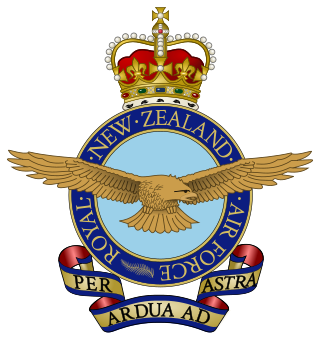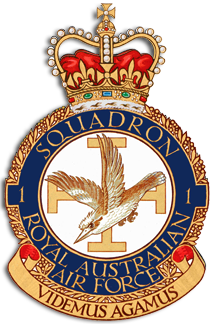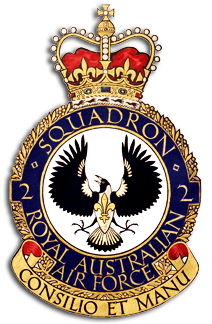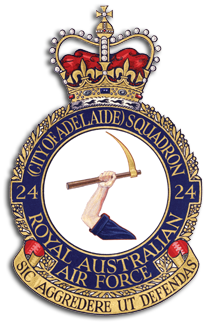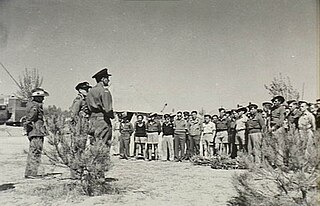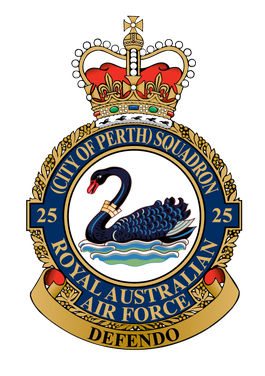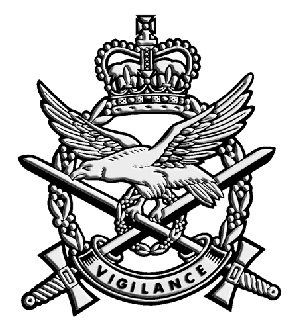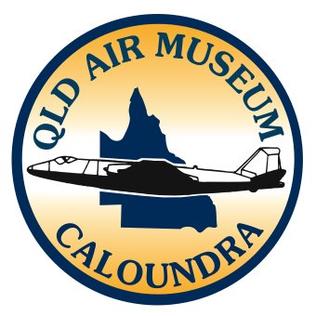| Type | Variant | Origin | Role | Dates in Service | Notes |
|---|
| de Havilland Dragon Rapide | DH.89 Dragon Rapide | United Kingdom | Twin-engine aerial survey biplane | 1935–1938 | One aircraft. Used by the RAAF in the 1930s for aerial surveying. |
| de Havilland Dragon Rapide | DH.89 Dragon Rapide | United Kingdom | Twin-engine eight or nine seat passenger airliner biplane | 1940–1944 | Seven aircraft. Impressed into RAAF service for training and communications duties in 1940. |
| Wackett / Tugan Gannet | | Australia | Twin-engine seven-seat transport, photographic survey, air ambulance aircraft | 1935–1946 | Six aircraft |
| de Havilland Express | DH.86A Express
DH.86B Express | United Kingdom | Four-engine ten-seat transport biplane | 1939–1945 | Eight aircraft. Operated by No. 1 Air Ambulance Unit RAAF in the Mediterranean. |
| de Havilland Fox Moth | DH.83 Fox Moth | United Kingdom | Five-seat light transport biplane | 1941–1945 | Four aircraft |
| Bristol Bombay | Bombay Mk I | United Kingdom | Twin-engine medium bomber, troop transport aircraft | 1942–1944 | RAF aircraft were operated by No. 1 Air Ambulance Unit RAAF. Nine aircraft |
| de Havilland Dragonfly | DH.90 | United Kingdom | Twin-engine five-seat light transport biplane | 1942 only | One aircraft |
| De Havilland Australia DHA-G2 Glider | DHA-G2 Glider
DHA-EG1 Glider prototype | Australia | Seven-seat transport glider | 1942–1950 | Eight aircraft |
| Dornier Do 24 | Dornier Do 24K | Germany | Three-engine reconnaissance, transport flying boat aircraft | 1942–1944 | Six aircraft |
| Grumman Goose | G-21A Goose Mk I | United States | | 1942 only | RAF aircraft were operated by No. 1 Air Ambulance Unit RAAF. One aircraft |
| Northrop Delta | Delta 1D-5 | United States | Eight-seat cabin aircraft | 1942–1944 | One civilian aircraft was impressed into RAAF service in 1942. |
| Ford Trimotor | 5-AT-C Trimotor
5-AT-E Trimotor | United States | Three-engine 14 to 15 passenger transport, air ambulance aircraft | 1942–1943 | Two aircraft |
| Lockheed Lodestar | C-60 Lodestar
C-60A Lodestar | United States | Twin-engine military transport, air ambulance aircraft, with a crew of three and capable of carrying fourteen passengers | 1943–1947 | Ten aircraft |
| Douglas DC-2 | Douglas DC-2 | United States | Twin-engine 14 passenger medium transport aircraft | 1940–1947 | 14 aircraft |
| Douglas DC-3 | Douglas DC-3 | United States | Twin-engine passenger transport aircraft | 1939–1940 | Four aircraft |
| Douglas C-47 Dakota | C-47 Dakota
C-47A Dakota
C-47B Dakota
C-49
C-50
C-53 Skytrooper | United States | Twin-engine military transport aircraft, with a crew of three or four and capable of carrying 27 passengers | 1943–1999 | RAAF 124 aircraft. The Dakotas were operated by No. 30 Squadron RAAF, No. 34 Squadron RAAF, No. 36 Squadron RAAF and No. 38 Squadron RAAF. |
| Martin Mariner | PBM-3R Mariner | United States | Twin-engine long-range transport flying boat aircraft | 1943–1946 | 12 aircraft |
| Avro York | York C Mk 1 | United Kingdom | Four-engine long-range VIP transport aircraft, with a crew of five to seven | 1945–1947 | One aircraft. The aircraft was operated by the Governor-General's Flight RAAF. See Royal Australian Air Force VIP aircraft |
| Percival Proctor | Proctor IV | United Kingdom | Four-seat communications aircraft | 1945–1947 | One aircraft. The Protor was operatred by the Governor-General's Flight RAAF. |
| Vickers VC.1 Viking | Viking C Mk 2 | United Kingdom | Twin-engine medium transport aircraft | 1947–1951 | One aircraft |
| Bristol Freighter | Freighter Mk 21 | United Kingdom | Twin-engine convertible passenger / freighter transport aircraft | 1949–1967 | Four aircraft |
| De Havilland Canada DHC-2 Beaver | DHC-2 Beaver | Canada | Seven-seat utility transport aircraft | 1955–1964 | Five aircraft |
| Convair 440 Metropolitan | CV-440 Metropolitan | United States | Twin-engine medium-range VIP transport aircraft | 1956–1968 | Two aircraft. Operated by No. 34 Squadron RAAF. See Royal Australian Air Force VIP aircraft |
| Lockheed C-130 Hercules | C-130A Hercules
C-130E Hercules
C-130H Hercules | United States | Four-engine medium-range, tactical transport aircraft, with a crew of four or five. | 1958–present | 36 aircraft. The C-130 Hercules was operated by No. 36 Squadron RAAF and No. 37 Squadron RAAF. See Lockheed C-130 Hercules in Australian service |
| De Havilland Canada DHC-3 Otter | DHC-3 Otter | Canada | 14-seat utility transport aircraft | 1961–1967 | Two aircraft |
| De Havilland Canada DHC-4 Caribou | DHC-4 Caribou | Canada | Twin-engine light tactical transport aircraft, with a crew of two and capable of carrying 22 troops | 1964–2009 | 28 aircraft. The Caribou was operated by No. 35 Squadron RAAF and No. 38 Squadron RAAF. |
| Vickers Viscount | Viscount Model 720
Viscount Model 756 | United Kingdom | Four-engine VIP transport aircraft | 1964–1969 | Two aircraft. Operated by No. 34 Squadron RAAF. See Royal Australian Air Force VIP aircraft |
| BAC One-Eleven | BAC One-Eleven 217EA | United Kingdom | Twin-engine 28-seat VIP transport aircraft | 1967–1990 | Two aircraft. Operated by No. 34 Squadron RAAF. See Royal Australian Air Force VIP aircraft |
| Hawker Siddeley HS 748 | HS.478 Series 2 | United Kingdom | Twin-engine light VIP transport aircraft | 1966–2004 | Two aircraft. Operated by No. 34 Squadron RAAF. See Royal Australian Air Force VIP aircraft |
| Dassault Falcon 20 | Mystere 20C
Falcon 20c | France | Twin-engine eight-passenger short-range VIP transport aircraft | 1967–1989 | Three aircraft. Operated by No. 34 Squadron RAAF. See Royal Australian Air Force VIP aircraft |
| GAF Nomad | Nomad N24A
Nomad N.22B | Australia | Twin-engine utility transport, reconnaissance aircraft, with a crew of two and capable of carrying 11 passengers | RAAF 1989–1993 | RAAF three aircraft |
| Boeing 707 | Boeing 707-368C
Boeing 707-338C | United States | Four-engine air-to-air refueling tanker, long-range transport aircraft | 1979–2008 | Eight aircraft. The Boeing 707s were operated by No. 33 Squadron RAAF. See Qantas fleet history |
| Dassault Falcon 900 | Falcon 900 | France | Three-engine 15-passenger VIP transport aircraft | 1989–2003 | Five aircraft. Operated by No. 34 Squadron RAAF. See Royal Australian Air Force VIP aircraft |
| Beechcraft Super King Air (Army, RAAF) | | United States | Twin-engine utility, light transport aircraft | B200/B200C 1997–2006
B350 2004– (RAAF from 2009) | Australian Army 24 aircraft. |
| Lockheed Martin C-130J Super Hercules | C-130J Super Hercules | United States | Four-engine medium-range, tactical transport aircraft | 1999–present | 12 aircraft |
| Boeing Business Jet/737 | 737 Boeing Business Jet | United States | Twin-engine special purpose passenger, VIP transport aircraft | 2002–present | Two aircraft. See Royal Australian Air Force VIP aircraft |
| Bombardier Challenger 604 | 604 Challenger | Canada | Twin-engine special purpose passenger, VIP transport aircraft | 2002–present | Three aircraft. See Royal Australian Air Force VIP aircraft |
| Boeing C-17 Globemaster III | C-17A Globemaster III | United States | Four-engine heavy transport aircraft | 2006–present | Eight aircraft. See Boeing C-17 Globemaster III in Australian service |
| Airbus A330 MRTT/KC-30A | KC-30A Multi Role Tanker Transport | France | Twin-engine air-to-air refueling tanker, long-range transport aircraft | 2011–present | |
| Alenia C-27J Spartan | C-27A Spartan | Italy | Twin-engine battlefield airlifter aircraft | 2015–present | |
| Dassault Falcon 7X | Falcon 7X | France | | 2019–present | Three aircraft. Royal Australian Air Force VIP aircraft |



